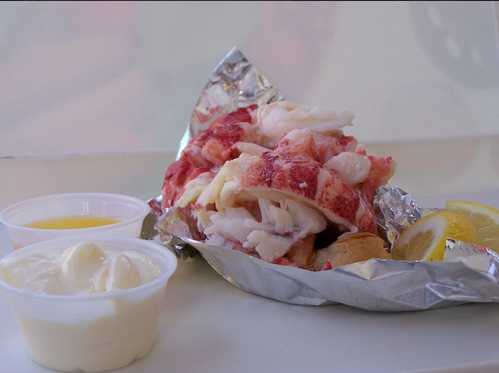Keywords: allen's
Item 7292
William Allen's essay on Norridgewock, ca. 1870
Contributed by: Maine Historical Society Date: circa 1870 Location: Norridgewock Media: Ink on paper
Item 23190
Harry W. Allen, Brunswick, ca. 1890
Contributed by: Pejepscot History Center Date: circa 1890 Location: Brunswick Media: Photographic print
Item 32834
199 Allen Avenue, Portland, 1924
Owner in 1924: Benjamin M Allen Style: Colonial Revival Use: Dwelling - Two family
Item 32122
Assessor's Record, 199 Allen Avenue, Portland, 1924
Owner in 1924: Benjamin M Allen Style: Colonial Revival Use: Stable
Item 150633
House for Prof. Allen Johnson, Brunswick, 1906
Contributed by: Maine Historical Society Date: 1906 Location: Brunswick Client: Allen Johnson Architect: Coombs and Gibbs Architects
Item 150164
House for Dr. and Mrs. Clarence E. Allen, Milbridge, 1947
Contributed by: Maine Historical Society Date: 1947 Location: Milbridge Client: Dr. Clarence E. Allen Architect: Eaton W. Tarbell
Exhibit
Visitors to the Maine woods in the early twentieth century often recorded their adventures in private diaries or journals and in photographs. Their remembrances of canoeing, camping, hunting and fishing helped equate Maine with wilderness.
Exhibit
Early Fish Canneries in Brooklin
By the 1900s, numerous fish canneries began operating in Center Harbor, located within the Brooklin community. For over thirty years, these plants were an important factor in the community.
Site Page
Presque Isle: The Star City - Allen Building
"Now a vacant building, attorney Charles P. Allen built the Allen building in 1890 to house his practice."
Site Page
Farmington: Franklin County's Shiretown - Elizabeth Akers Allen, née Chase
"For much of her career, Allen earned her living partly as a journalist. The success of her first book allowed her to travel in Europe in 1859–60."
Story
Dancing through barriers
by Garrett Stewart
My Dad performed on the Dave Astor Show in Portland during the civil rights era.
Story
The best lobster roll in Maine!
by Debbie Gagnon
The history of Red's Eats and the recipe for our famous Lobster Rolls
Lesson Plan
Longfellow Studies: The Birth of An American Hero in "Paul Revere's Ride"
Grade Level: 9-12
Content Area: English Language Arts, Social Studies
The period of American history just prior to the Civil War required a mythology that would celebrate the strength of the individual, while fostering a sense of Nationalism. Longfellow saw Nationalism as a driving force, particularly important during this period and set out in his poem, "Paul Revere's Ride" to arm the people with the necessary ideology to face the oncoming hardships. "Paul Revere's Ride" was perfectly suited for such an age and is responsible for embedding in the American consciousness a sense of the cultural identity that was born during this defining period in American History.
It is Longfellow's interpretation and not the actual event that became what Dana Gioia terms "a timeless emblem of American courage and independence."
Gioia credits the poem's perseverance to the ease of the poem's presentation and subject matter. "Paul Revere's Ride" takes a complicated historical incident embedded in the politics of Revolutionary America and retells it with narrative clarity, emotional power, and masterful pacing,"(2).
Although there have been several movements to debunk "Paul Revere's Ride," due to its lack of historical accuracy, the poem has remained very much alive in our national consciousness. Warren Harding, president during the fashionable reign of debunk criticism, perhaps said it best when he remarked, "An iconoclastic American said there never was a ride by Paul Revere. Somebody made the ride, and stirred the minutemen in the colonies to fight the battle of Lexington, which was the beginning of independence in the new Republic of America. I love the story of Paul Revere, whether he rode or not" (Fischer 337). Thus, "despite every well-intentioned effort to correct it historically, Revere's story is for all practical purposes the one Longfellow created for him," (Calhoun 261). It was what Paul Revere's Ride came to symbolize that was important, not the actual details of the ride itself.



















